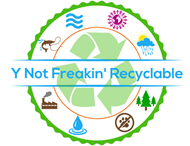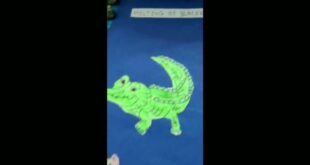[ad_1]
This story was originally published by High Country News and is reproduced here as part of the Climate Desk collaboration.
People have been trying to get outdoors during this COVID-19 pandemic, and I don’t blame them. Without fresh air to breathe, clear sunlight, or mist on our eyelids, I don’t think we can remain sane. And we need a sane population. Especially now.
All over the country, beaches and parks are closed, warning tape is wrapped around playgrounds. People are trying to get out, but not finding any place to go to. Central Park remains open, and New York City has been asked by its mayor to close certain streets to vehicles so people can get out and walk. In the San Francisco Bay area, where shelter-in-place orders are in effect, residents are still being told that parks are open and to go enjoy them — with certain caveats: The restrooms aren’t open, and neither are the trashcans, and don’t hike in groups.
In the West, we’ve got plenty of space. But are we supposed to be using it? We’re hearing different messages. There’s been a pushback against recreating on public lands, mostly from gateway communities receiving visitors they don’t want, even as people are being encouraged to enjoy parks and open spaces where they can keep a safe distance from others. Most national parks remain open, and entry fees have been waived.
So which is it? Stay indoors, or go outside? If you go out for a walk, you might hear someone shouting at you from a window, “What don’t you understand about just stay home?”
Moab was overwhelmed by tourists — a madhouse, I’m told, which is significant when you hear it from a Moab local. Last week, it became too much, and all tourist services were closed down. Mayor Emily Niehaus announced, “Moab is asking people to please stay in their home community.” The Southeast Utah Health Department halted visitor recreation, restaurants were closed or limited to curbside, camping and hotels across multiple counties were closed to non-locals, and visitors centers have shut down. Everybody, go home. Is home restricted to the indoors, or does it include the spaces around you?
I believe in the right to be outside, but at this moment it shouldn’t be exercised through visitor centers and bottlenecks. Forget the parks; seek out the spaces in between, the backyards and alleys. It’s a great time to explore an irrigation ditch or the woods at the edge of town — to see what’s around you. Be as local as you can. If you’re heading to Red Mountain Pass to ski between Silverton and Ouray, Colorado, and you have out-of-county plates, the San Juan County Sheriff’s Office will place a yellow slip on your windshield reading, “San Juan County Colorado is enacting a LOCALS ONLY order until further notice due to the COVID-19 Virus crisis.” Further down the slip, it notes, “Failure to comply with this order will result in charges with the potential of one year in prison, and a $1,000 fine.”
In southwest Colorado, as in much of the West, we’re fortunate to live in a nest of public lands with few trails or kiosks, mostly dirt roads with random pullouts — the spaces managed by the Bureau of Land Management. When I hear “shelter in place,” I think of this place. How far does that legally, ethically extend?
A couple of days ago, my gal and I met up with two friends, another couple sheltering at home, and drove separately to a rock scarp near where we live. We kept 6 feet or more between us at all times, handing nothing back and forth without an antibacterial wipe. The air we breathed was cavernous, a sandstone canyon without a trail or a sign, a place where you’d rarely see footprints. For half a day, we scrambled over boulders and took pictures of rock and sky. I took more caution than I normally would, limiting the risk, because you don’t want to take any resources from rescue workers who already have tough jobs to do. On our hike, we recounted the weeks since we’d seen each other last, catching up on the stories under the vault of the sky. This, I believe, is sanity. As far as I’ve heard, what we did is neither illegal or unhealthy. Perhaps it’s not unethical, either.
I realize not everybody can do this; the out-of-doors comes in degrees. Sometimes just standing on a sidewalk and staring into the sky makes a world of difference.
Currently, federal land agencies, including the National Park Service, defer to the Centers for Disease Control and Prevention for social-distancing guidelines. But for those wondering about going out farther than their own back-forty, Colorado Parks and Wildlife put out simple guidelines reflecting outdoor recommendations from groups and agencies around the West.
In a nutshell:
- If you are sick, stay home.
- Keep a social distance from others.
- Avoid high-risk or remote activities.
- Announce your presence to others.
- Stay regional.
- Avoid times and places of high use.
- Practice good hand hygiene.
- Be kind. Say hi.
A key bullet point is “stay regional.” How big is a region? Where do you usually travel for groceries? In some of these big Western counties, a hundred miles or more can be your region. In Denver, I figure this means your city and the land immediately around it; Front Range residents are advised to avoid traveling to the high country or to small mountain communities closed to visitors. In the Pacific Northwest, permits are still being given for the Pacific Crest Trail. Online battles are raging between those leaving the trail — who are being called “quitters” — and those staying on it, who are being accused of selfishly making coronavirus and its host of difficulties worse.
In other words, there’s no official definition. One good answer came from a friend in Trinidad, Colorado: “If someone gets to a spot and there are a bunch of people there, you should immediately go somewhere else.”
I was probably one of the last groups to leave the southeast Utah backcountry late last week. I came out with participants in a wilderness archaeology program. We traveled through the town of Bluff to see what was happening, and we found a pandemic in progress: People were telling us to go home, to stay put in Utah, to go back to the wilderness where we’d been living happily for the last five days. Airplanes were still flying, so civilization was still intact. But answers were hard to find. We all headed back home, which sent us in every direction but kept us out of the hair of the locals, which seems to be the major issue. Small gateway communities do not need the strain on their groceries, gas, or medical services.
If you’re looking for justification to take a trip to the backcountry, leaving your area to go through someone else’s, this isn’t it. Stay in your home terrain. If where you live has backcountry wrapped around it, or a trail that’s open and uncrowded, or just some woods to walk through, I consider that an extension of home. It may not be true for most of us, but many live out here on the margins. And all of us, I hope, can reach the outdoors in some form, because sanity is also necessary for health.
 Pollution Climate Change Holocene Deforestation Population Acidification Y Not Freakin' Recyclable
Pollution Climate Change Holocene Deforestation Population Acidification Y Not Freakin' Recyclable



